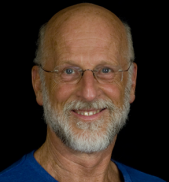To Emerge from Our Pain We Have to Enter It
Whoever we are, wherever we are, we inevitably experience pain. And just as inevitably, we tend to store as much as possible of our pain in our shadow, finding strategies to numb, bypass, or otherwise get away from our pain. The more we try to flee the felt presence of pain—whether through denial, dissociation, or distraction—the more deeply it takes root in us, and not just in our shadow. So what are we to do?
The bare-bones answer begins with turning toward our pain, which means directly facing and feeling the raw reality of it. Then eventually we move closer to our pain, step by mindful step, gradually entering it, bringing our wholehearted awareness into its domain. And we start to recognize that in order to emerge from our pain, we have to enter it.
Often when we say that we’re in pain, we’re not really in our pain but rather only closer to it than we’d like. We’re then in a sense still outside it, still cut off from its depths, still removed from its deeper interior.
But, we may ask, isn’t the point to get rid of pain or to at least get away from it? After all, isn’t pain already unpleasant enough? Why make it worse by moving closer to it, let alone entering it? These and similar questions are quite understandable, given our commonplace aversion to pain, be it physical, mental, emotional, or spiritual. The very notion of turning toward our pain and getting close enough to it to start knowing it well may initially seem counterintuitive, foolhardy, misguided, or masochistic.
In turning toward our pain there’s great freedom—a freedom that grounds us in our core of being. As we slowly but steadily undo our various ways of fleeing our pain, the energy we’ve invested in getting away from our pain—as opposed to simply being with our pain—is freed up, becoming available for us to use for truly life-giving purposes.
Remaining present with our pain may be far from easy, but with practice it’s quite doable. And the more consistently present we can be with our pain, the less it pains us. It may still hurt, but we don’t mind as much, for we’re more able to hold it, to both contain it and express it under certain conditions (as when emotional release is clearly called for).
There are many kinds of pain—physical, emotional, mental, psychological, existential—but the essence of each kind of pain is a compellingly felt sense of unpleasantness or discomfort, ranging from irritability to agony. That essence is what we encounter, hold, and become intimate with as we work with our pain, knowing it in both its detailing and core reality.
Pain can consume us, and our efforts to get away from pain can also consume us. When we turn away from our pain, seeking an escape from it, thereby avoiding knowing it and relating to it, we entrap ourselves in our apparent solutions to our pain, getting overly attached or addicted to whatever most pleasurably or reliably removes us from it.
As much as we may wish pain wasn’t there, it abides, offering us the same basic opportunity: to cease avoiding it so that we might use it for life-giving purposes, allowing it to further open our eyes and root us in truer ground.
This doesn’t mean that pain is some sort of wonderful gift but rather that pain’s openly felt presence has the capacity to funnel our attention into single-pointed focus, gathering us into a lucid wholeness, however compressed, rather than fragmenting us.
Go to the heart of your pain and you won’t find more pain but rather a freedom that doesn’t require the absence of pain.

Robert Masters is an integral psychotherapist, relationship expert, and trainer of healing professionals. His work blends the psychological and emotional with the spiritual. He holds a doctorate in Psychology and is the author of many books, most recently Emotional Intimacy and To Be a Man.
Come Follow Us on Twitter – Come Like Us on Facebook
Check us out on Instagram – And Sign Up for our Newsletter




 www.robertaugustusmasters.com
www.robertaugustusmasters.com







